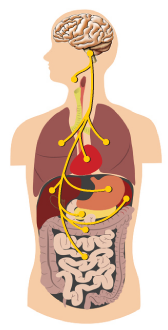Sauce ingredients:
1 (16 ounce) can jellied
cranberry sauce
½ cup fresh cranberries (or another can of cranberries)
½ cup fresh cranberries (or another can of cranberries)
½ cup water
Juice of 1 lemon
Juice of 1 lemon
Stuffing ingredients:
1 medium head of cabbage
2 pounds ground turkey or ground beef (or combo or create a vegan variation of your favorite veggies)
2 pounds ground turkey or ground beef (or combo or create a vegan variation of your favorite veggies)
½ cup uncooked rice
Salt and freshly ground pepper (plus whatever other seasonings/herbs you prefer)
1 large egg (optional)
1 medium onion, grated
4 tablespoons ketchup
Salt and freshly ground pepper (plus whatever other seasonings/herbs you prefer)
1 large egg (optional)
1 medium onion, grated
4 tablespoons ketchup
The sauce: Mix the cranberry sauce, 1
cup water, lemon in a saucepan. Bring to a boil; add fresh cranberries. Simmer
for another 5 minutes. For a variation on the sauce, you may add ½ cup of raisins
and/or diced apple. Turn off and set aside.
Prep the cabbage:
Core the cabbage and place in a large pot with water to cover. Bring to a boil and then simmer, covered, about 10 minutes or until wilted. Cover with cold water and drain. This makes the cabbage easier to stuff and roll.
Core the cabbage and place in a large pot with water to cover. Bring to a boil and then simmer, covered, about 10 minutes or until wilted. Cover with cold water and drain. This makes the cabbage easier to stuff and roll.
Preheat the oven to 300 degrees
and prepare the stuffing in a large mixing bowl:
In a large bowl mix the meat, rice, salt and freshly ground
pepper to taste, egg, onion, ½ cup water and ketchup, blending with a large
fork or your fingers until well mixed.
Trim the ribs of the cabbage, remove the outside leaves, and
line a large casserole dish with them. Pull out the inside leaves and place
them one by one on a cutting board, outside down. Fill with two heaping tablespoons of
the filling, depending on the size of the leaf. Fold up like an envelope, top
first, then bottom, and then the two sides. Place seam side down in the line
casserole. Repeat with the rest of the cabbage and the filling.
Pour the sauce over the stuffed cabbage and bake covered, for 2 hours on 300 degrees. Uncover and bake on 400 for one-half hour or until lightly browned on top.
Pour the sauce over the stuffed cabbage and bake covered, for 2 hours on 300 degrees. Uncover and bake on 400 for one-half hour or until lightly browned on top.
Crockpot or Instant Pot variation:
Follow the above and set stuffed cabbage rolls in a large crockpot instead of a casserole dish and top with the
sauce. Cook on high for 4 hours or on low for 8 hours in the crockpot with the lid on.
Use their recipe or the above ingredients for the instant pot variation.




